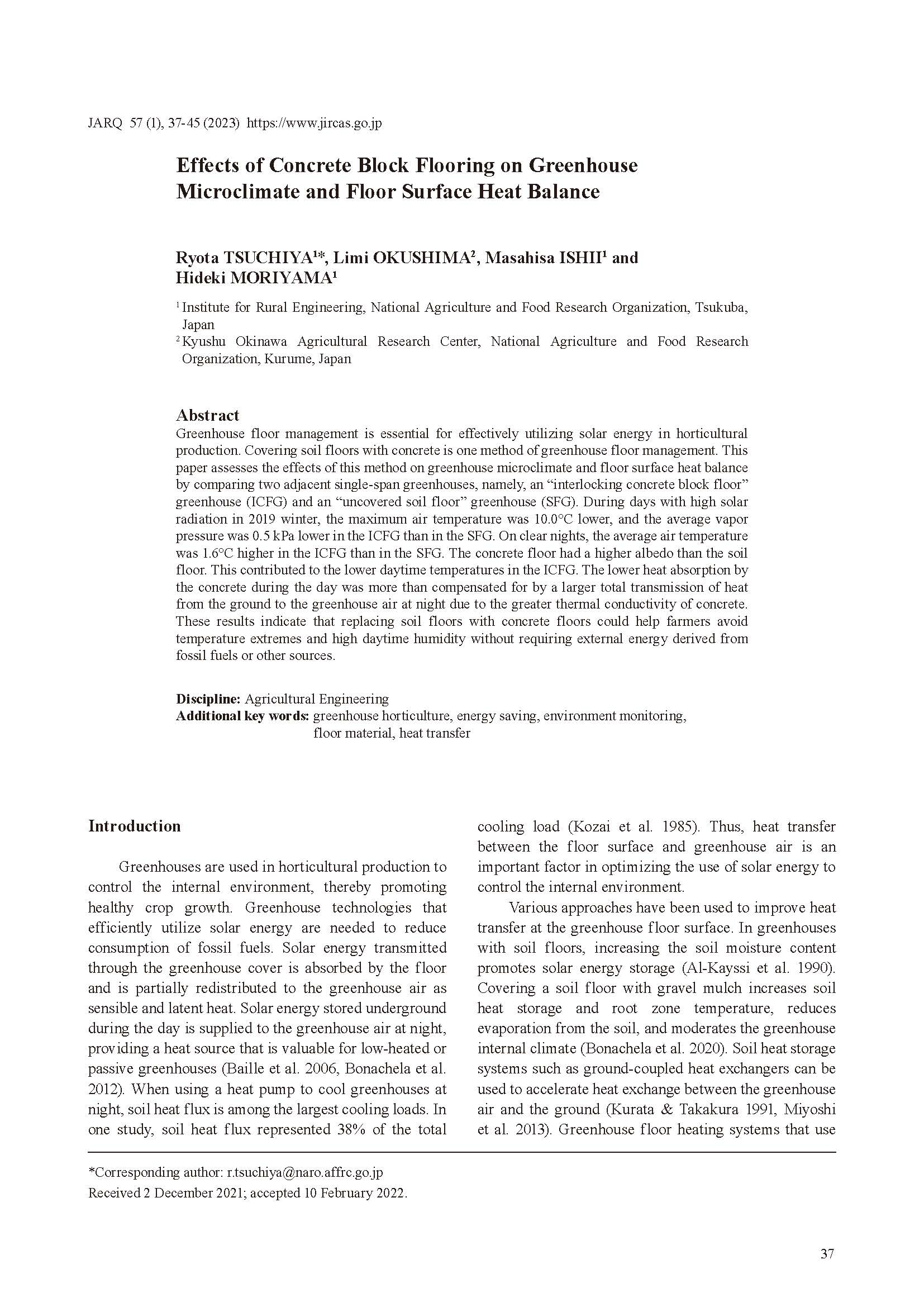Greenhouse floor management is essential for effectively utilizing solar energy in horticultural production. Covering soil floors with concrete is one method of greenhouse floor management. This paper assesses the effects of this method on greenhouse microclimate and floor surface heat balance by comparing two adjacent single-span greenhouses, namely, an “interlocking concrete block floor” greenhouse (ICFG) and an “uncovered soil floor” greenhouse (SFG). During days with high solar radiation in 2019 winter, the maximum air temperature was 10.0°C lower, and the average vapor pressure was 0.5 kPa lower in the ICFG than in the SFG. On clear nights, the average air temperature was 1.6°C higher in the ICFG than in the SFG. The concrete floor had a higher albedo than the soil floor. This contributed to the lower daytime temperatures in the ICFG. The lower heat absorption by the concrete during the day was more than compensated for by a larger total transmission of heat from the ground to the greenhouse air at night due to the greater thermal conductivity of concrete. These results indicate that replacing soil floors with concrete floors could help farmers avoid temperature extremes and high daytime humidity without requiring external energy derived from fossil fuels or other sources.

